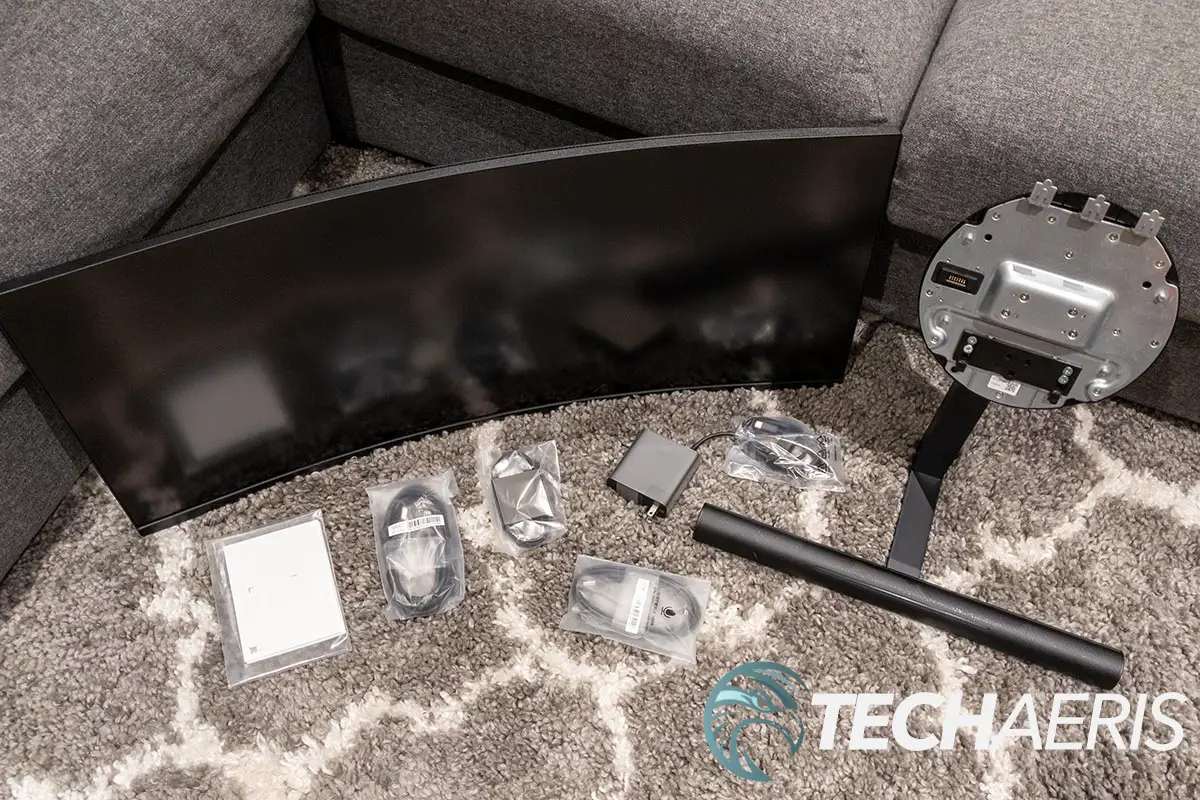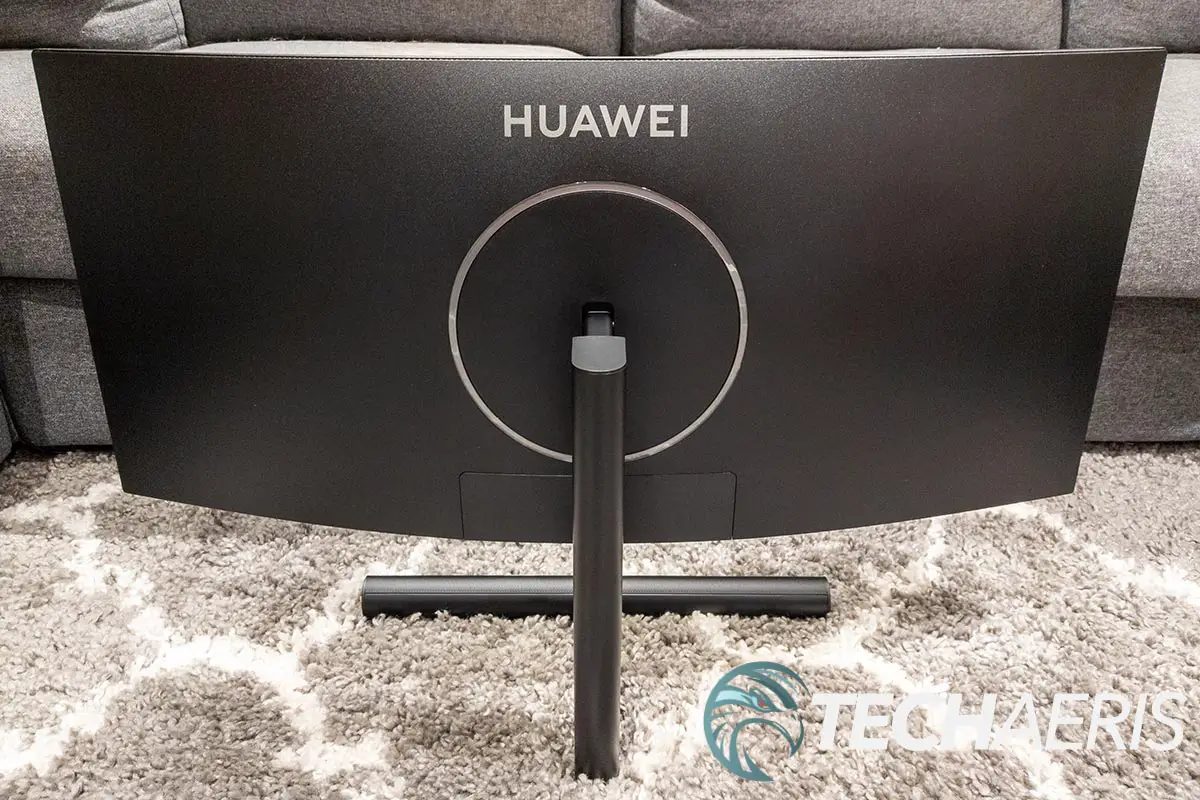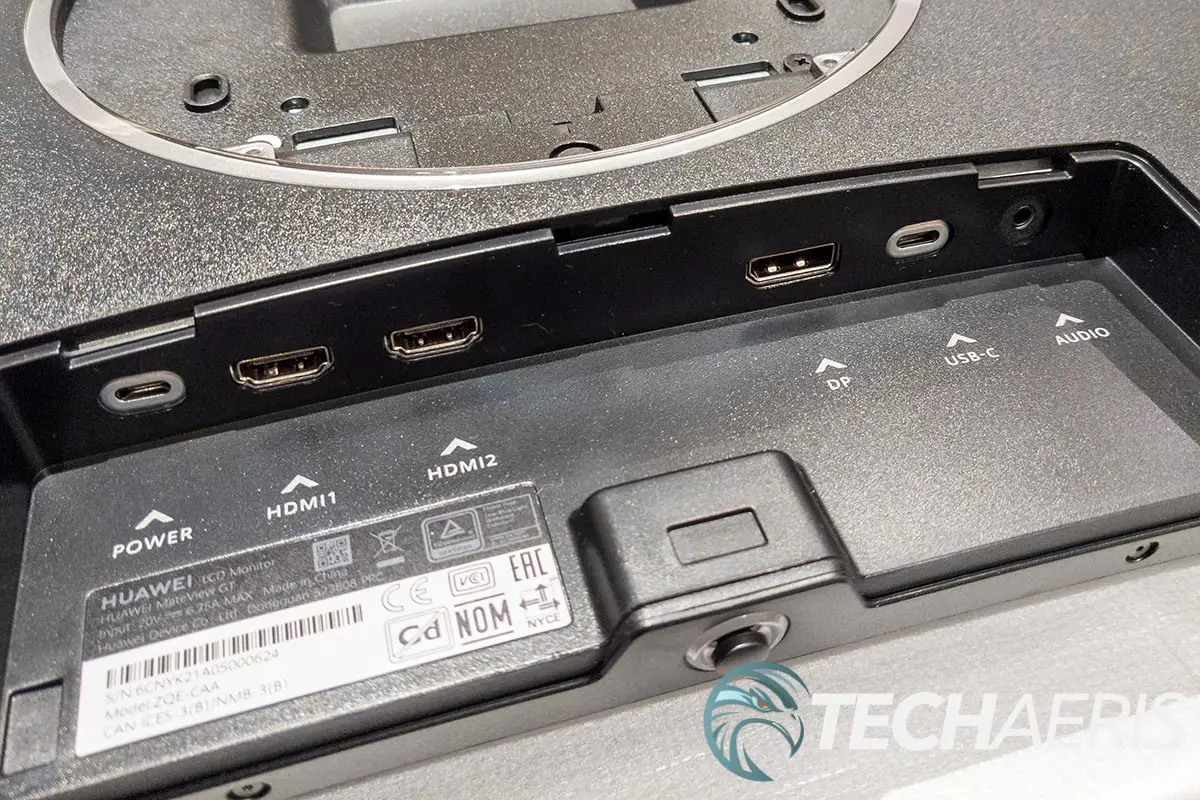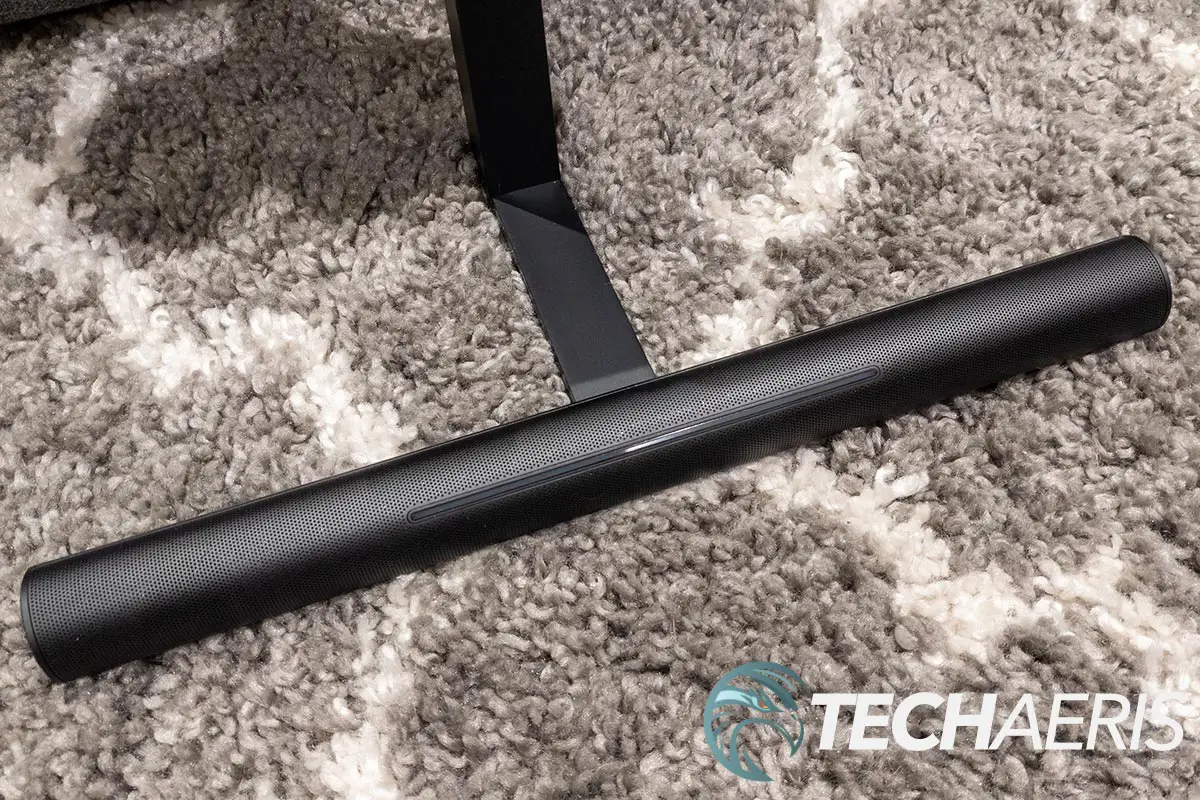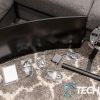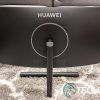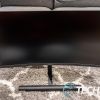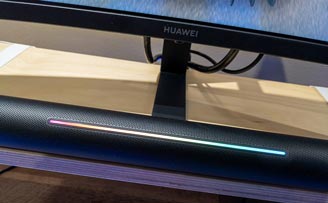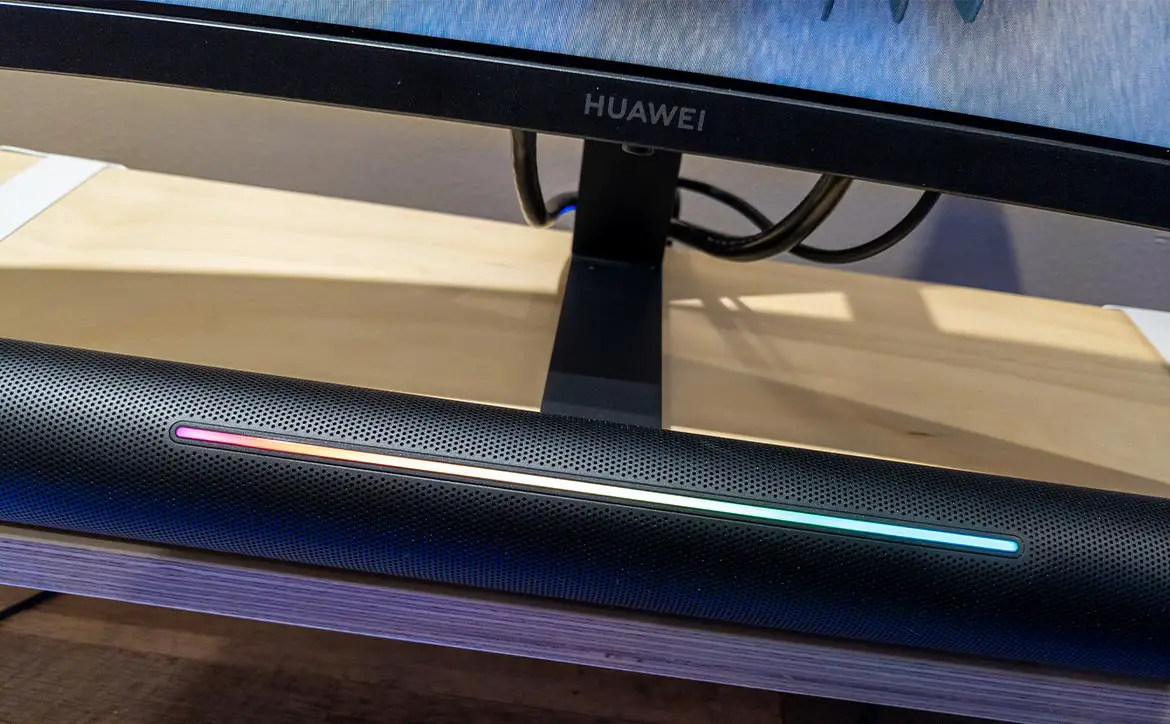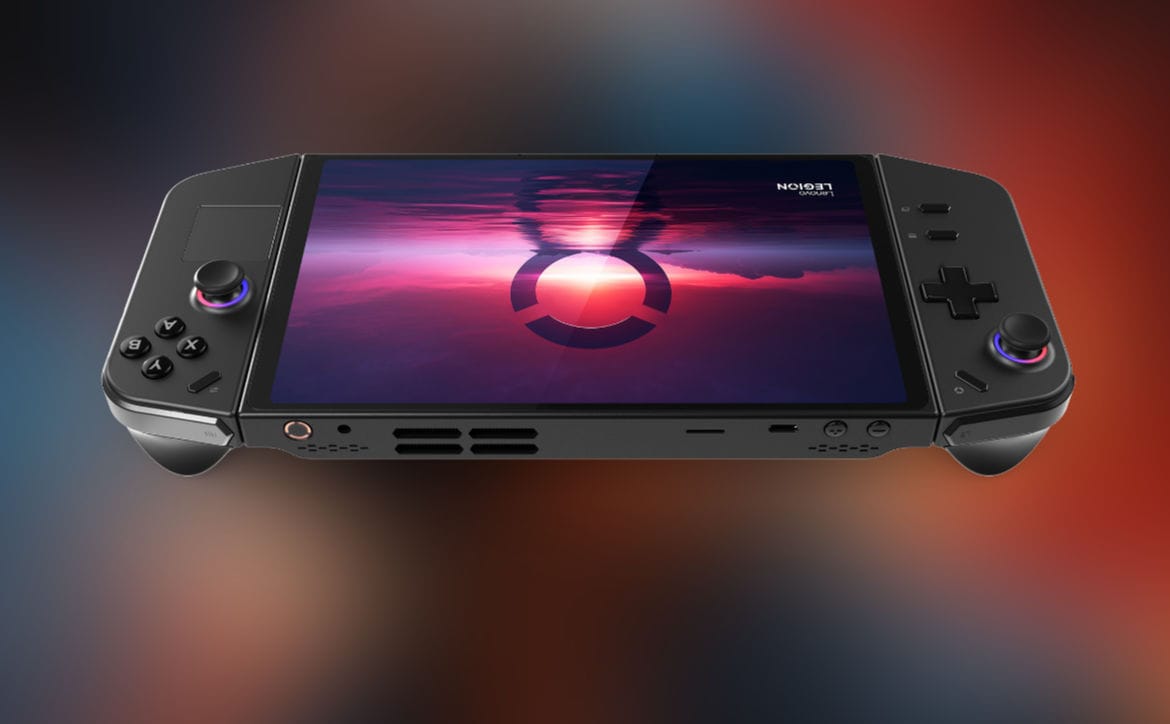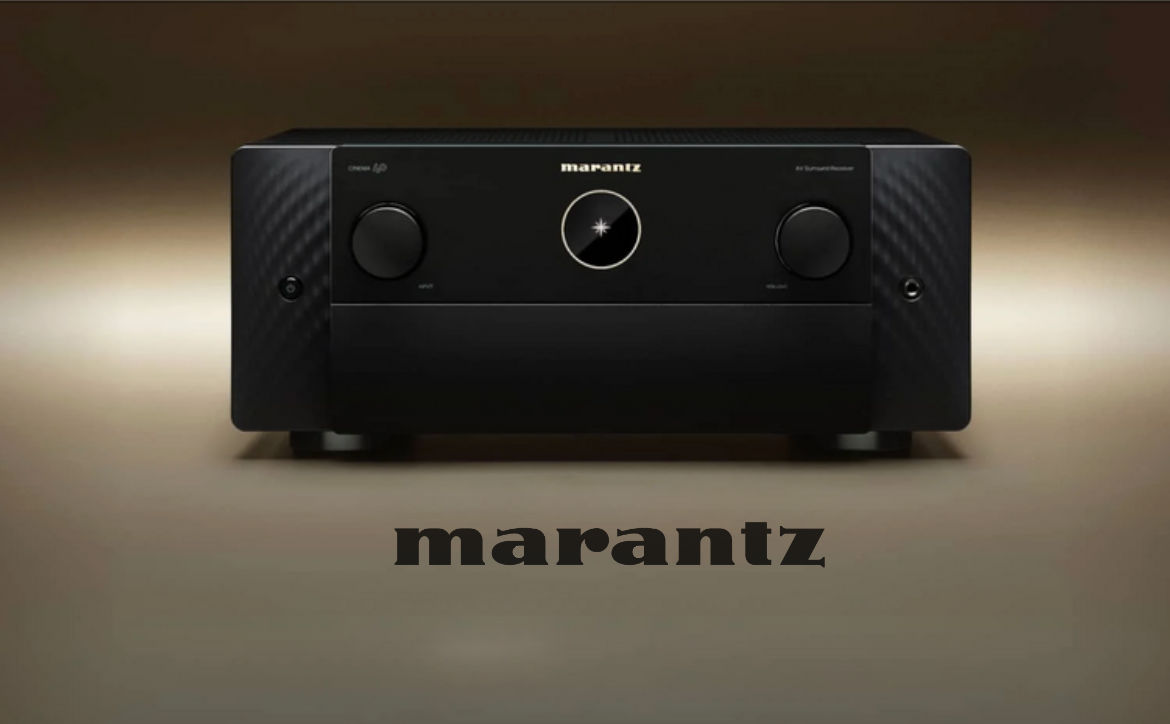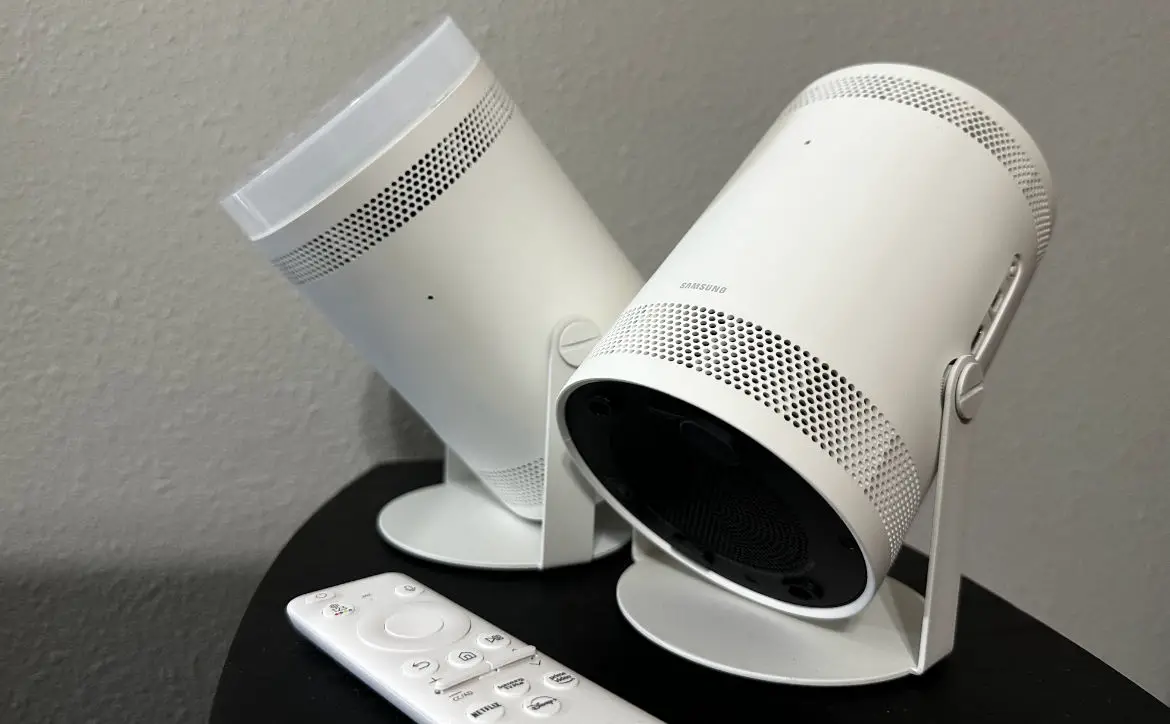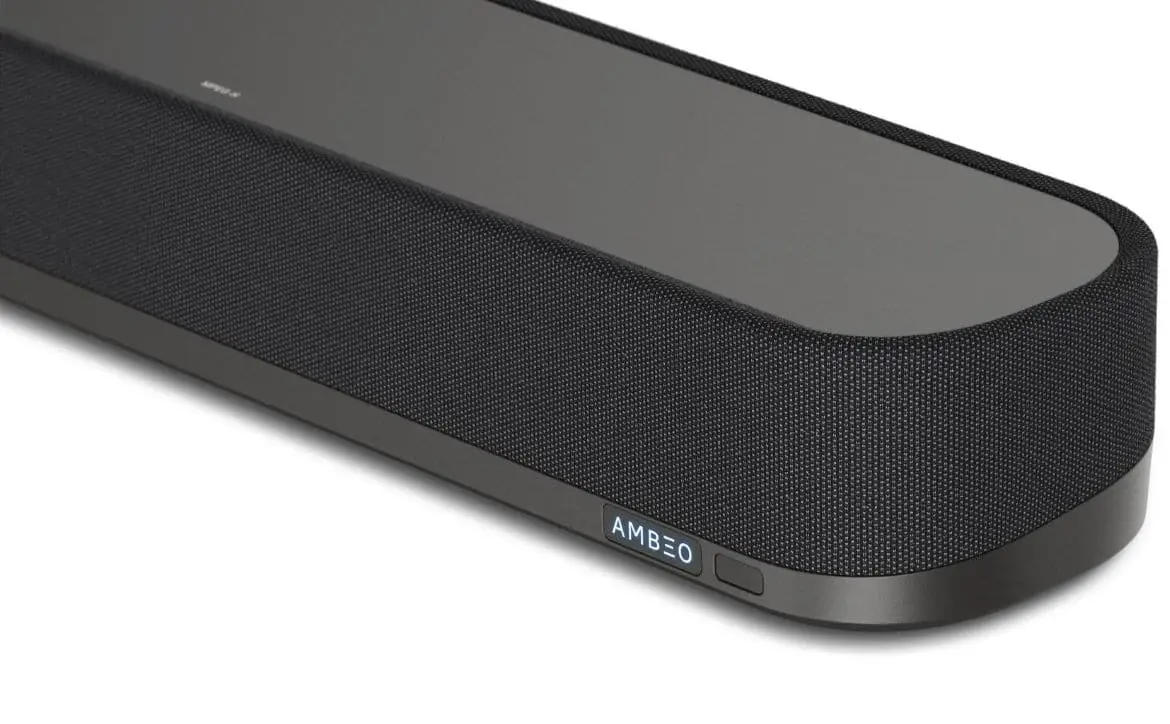
Over the past few years, monitors have become larger and with better screen technology. There are a few companies that tried in the past to add speakers to their monitors, but usually with disappointing results. However, it looks like some OEMs are taking sound seriously when it comes to monitors, and we’ve seen a couple of monitors here at Techaeris recently that actually offer up decent sound.
Estimated reading time: 13 minutes
Our Huawei MateView GT review looks at a 34-inch ultrawidescreen curved gaming monitor that comes with an attached soundbar, hopefully eliminating the need for an external speaker for your computer. Read on for our full review!
Table of contents
Specifications
The Huawei MateView GT we reviewed has the following features and specifications:
| Model | Huawei MateView GT |
| Display size | 34-inches |
| Aspect ratio | 21:9 |
| Panel type | VA LCD |
| Resolution | 3440 x 1440 (WQHD) |
| Screen refresh rate | 165Hz |
| Colour gamut | 90% DCI-P3 (typical), 121% sRGB |
| Colours | 1.07 billion |
| HDR | HDR10 |
| Colour accuracy | ΔE < 2 (indicates the average colour standard value in the sRGB colour gamut) |
| Curvature | 1500R |
| Brightness | 350 nits (typical) |
| Contrast ratio | 4000:1 (typical) |
| Screen-to-body ratio | 91% |
| Eye Comfort Mode | TÜV Rheinland Low Blue Light and Flicker Free certification |
| AMD FreeSync Premium | Supported (off by default) |
| Soundbar | Dual full frequency 5W (rated value) speakers with RGB touch volume control and customizable lighting |
| Gameplay features | Dark field control, crosshairs |
| Microphone | DMIC x2, supports 4-meter sound pickup, background noise cancellation, and echo cancellation |
| Ports | • USB-C for power • USB-C full function (includes display) • 2x HDMI 2.0 • 1x DisplayPort 1.4 • 3.5 mm headset and microphone 2-in-1 jack |
| Wall mount | VESA 100 x 100mm |
| Height adjustment | 110mm |
| Tilt | -5° ~ 20° forward and backward |
| OSD | Five-way joystick |
| Dimensions (W x H x D) | 806.45 x 431.8-533.4 x 234.95mm (31.75 x 17-21 x 9.25″) |
| Weight | approx 9.55 kg (21.05 lbs) |
What’s in the box
- Huawei MateView GT LCD Monitor x 1
- Stand
- 135 W USB-C power adaptor
- USB-C to USB-C high-speed data cable
- USB-C to USB-A cable
- DP 1.4 cable
- Quick Start Guide
- Warranty card
Design
The Huawei MateView GT 34-inch ultrawidescreen gaming monitor is black. Featuring a 1500R curvature, it curves slightly inwards towards the viewer. The back of the monitor has the Huawei logo printed in grey across the top. Below this is a circular slot, which is where the stand attaches. Once attached, the circle is outlined by a “silver frost” ring, adding a touch of separation from the black colour of the rest of the monitor.
Below the stand slot is where you’ll find your ports. When looking at the back, from left to right, you’ll find the USB-C power port, two HDMI 2.0 ports, a DisplayPort 1.4 port, a USB-C data port, and a 3.5mm audio jack. As with most monitors, a cover plate is included with the monitor.
Almost nothing annoys me more with a monitor is trying to get the port cover plate off after it’s snapped in. I’ve used more than a few monitors that I honestly thought I was going to snap the tabs by removing the plate. Huawei has fixed this with an innovative solution I haven’t yet seen: magnets. The top of the cover has tabs that slide into the top of the port area on the back of the monitor, but then the bottom corners attach to the monitor with magnets. It holds fast and is super easy to remove when you need to access your ports.
The stand is pretty thin but substantial. Just over 1 1/4-inches wide, it’s about 1/2-inch thick on the leg part and about 2-inches thick going up the back. The main stand part that attaches to the monitor is rounded at the back. Unfortunately, there is no slot in the monitor stand for cable management. It’s not the end of the world, but would be a nice addition.
Attached to the front of the single-arm stand is the soundbar. It’s slim, about half an inch in diameter, and 17 1/4-inches wide. On the bottom are two small pads on either end to help support the monitor. Either end of the soundbar has a nice polished black metal piece with a small bevel around the outer edge. The front of the soundbar is covered in a speaker grille material. A 7-inch by 1/16-inch LED touch panel is centred along the front. This touch panel lets you control the volume, as well as easily mute it. The touch panel can be configured between eight different light effects as well.
The front of the panel has relatively thin physical bezels, about 1/8-inch on the sides and top and 5/8-inch on the bottom. Centred on the bottom is the Huawei logo, again printed in grey. When it comes to actual bezels, including the ones on the screen itself, the top and side bezels increase to about 3/8-inch and the bottom to about 3/4-inch. While not small, they aren’t overly big either. Beneath the Huawei logo on the bottom edge of the monitor is where you’ll find the 5-way directional button for navigating the OSD. The top and bottom edges also have ventilation slits for airflow.
As for dimensions, the monitor is about 31 3/4″ wide, 9 1/4″ deep (which includes the soundbar), and between 17 and 21″ in height depending on what height adjustment you have set. In addition to the extra height adjustment, the monitor can also tilt between -5° forward and about 20° backward. Unfortunately, there is no swivel adjustment on the MateView GT.
The monitor is VESA mountable as well, but if you do so, you’ll lose the soundbar altogether, defeating the purpose of getting a monitor with a soundbar.
Overall, the Huawei MateView GT monitor looks sharp and pretty classy.
Display
While the exact panel manufacturer isn’t disclosed, the Huawei MateView GT has a 34-inch VA panel. Its 21:9 aspect ratio offers a 3440×1440 resolution, which is supported by most games. It has 90% DCI-P3 and 121% sRGB coverage, 1.07 billion colours, 350 nits brightness, and a 4000:1 contrast ratio.
While not the brightest, I didn’t have any issues with the screen in my basement or a more brightly lit room with plenty of outside light coming in. The colours were nice and accurate as far as I could tell, and for the most part, I used the P3 setting. On that note, there are several different picture quality presets including sRGB, MOBA, RPG, and others. These adjust the colour, contrast, and brightness accordingly and seemed suited for each game genre they are tuned for.
The Dark Field Control feature lets you adjust the display brightness in low-light scenes, making it easier to see enemies while gaming. The display also has a crosshair feature which puts a crosshair overlay on the middle of your screen to assist with aiming in first-person shooters.
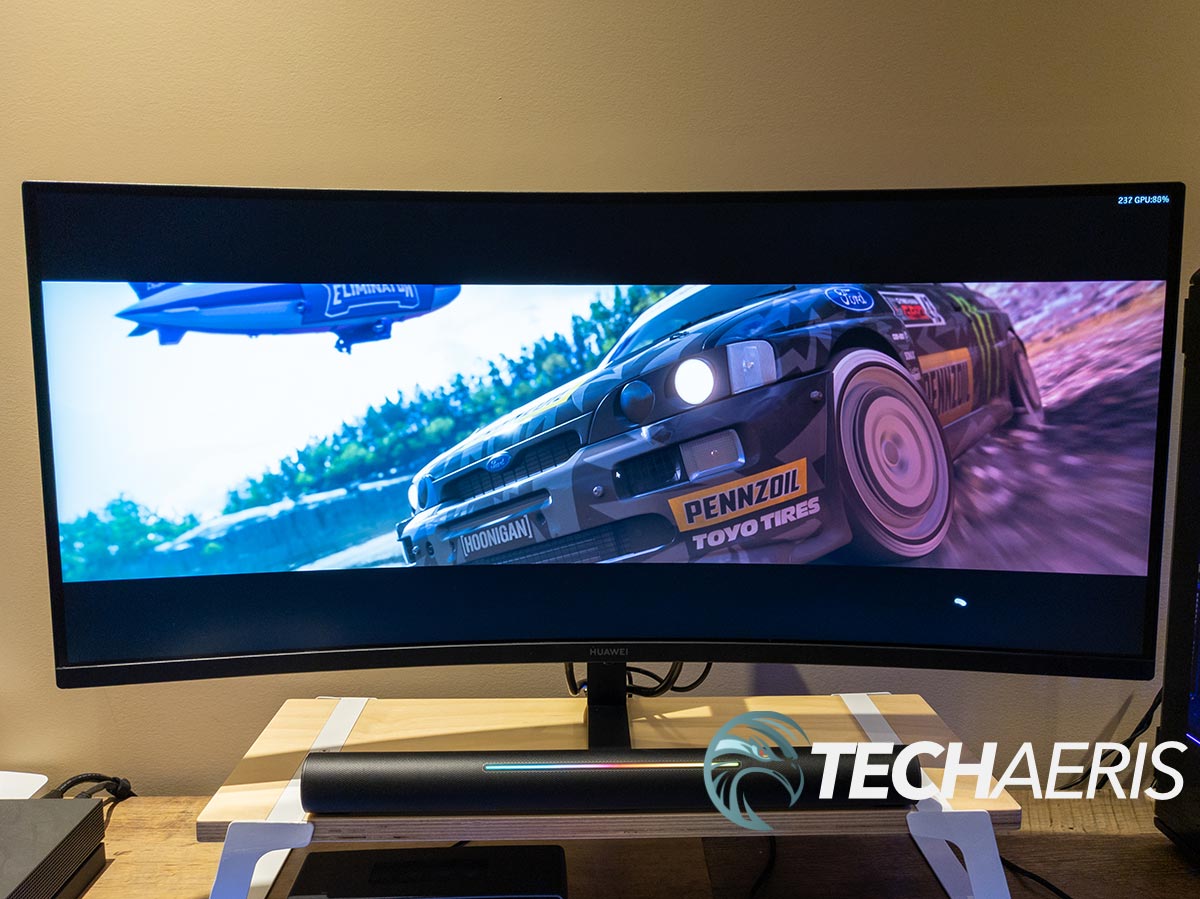
While larger monitors with this resolution have a lower PPI, the monitor was still crisp and clear enough for day-to-day office tasks as well as gaming.
Assembly
You’d think a monitor with a soundbar might require additional assembly, but Huawei has made it just as easy to assemble the MateView GT as one without. Unpack the stand with the integrated soundbar, tilt and insert the upper end of the base support into the slot on the rear of the monitor, then push it down until you hear a click. Flip the monitor up carefully, set it on your desk, and you are good to go (once you plug it and the appropriate source cables into it). To remove the stand/soundbar, press the button on the bottom of the rear of the monitor, lift the base up from the bottom and lift the base support away from the monitor.
Ease of Use
Most monitors are pretty easy to use out of the box, and the Huawei MateView GT is no exception. Once assembled, plug the USB-C power supply into the far left port, plug in the source cables you want to use, and then connect those cables to your devices. Fun fact, you can use the USB-C port on a tablet or phone to mirror your device to the monitor.
Once connected to your laptop, desktop, or another device, you can use the touch slider on the soundbar to increase or decrease the volume. Double tapping the same touch slider will mute or unmute your device’s audio. Depending on your setup, I found two ideal ways to use the soundbar. The first is to increase the volume on your computer to 100% then use the touch slider to adjust the volume of the soundbar. To be honest, that is the most likely setup scenario for most people. If like me you have a keyboard with a volume knob, I found it easier to set the soundbar to 100% and then control the volume from my keyboard. The same goes if you’re used to controlling volume with the Fn keys on your keyboard.
As far as the 5-way directional menu button is concerned, it’s easily accessible and just as easy to use to navigate the OSD. Pressing it upwards will turn the monitor on if it’s off, or bring up the OSD menu. To turn off the monitor, press the button for about three seconds and the monitor will turn off. A neat feature is the ability to lock the button. To do this, pull the button forward for about five seconds until a message stating the button is locked appears on the display. This prevents accidental triggering of the menu, but that’s not usually an issue. To unlock it, pull it forward again for the same amount of time and you see the unlock message on the display.
The OSD menu lets you access and change a number of settings. These include:
- GamingVision: Game assist (Dark field control, refresh rate, crosshairs), Picture mode (Scenery, Movie, sRGB, RTS, FPS, MOBA, Custom, P3), Lighting effects (set SoundBar light effect to static or breathing and select between 8 presets)
- Color: Brightness, Contrast, Color temperature (Standard, Cool, Warm, Custom RGB), Low blue light
- Picture: OD, Scaling (Fullscreen, scaled, original size)
- Input source: HDMI-1, HDMI-2, USB-C, DP
- System settings: Volume, Sound mode (Standard, Music, Movie, Game, Call), Microphone (mute/unmute), Language, Transparency, Menu Timeout, Shortcuts (program the up, down, left, right functions of the 5-way directional button), Button lock, Information, Reset
As you can see, there are plenty of options for adjusting the monitor in both colour and sound — all of which are easy to access and can be easily mapped to the button for quicker access.
Performance
The Huawei MateView GT gaming monitor performs as one would expect. I had no issues with turning it on or off, using the soundbar, or toggling between the various picture modes. As far as gaming is concerned, this is a gaming-focused monitor, after all, and the games I tested on it ran just fine. With its 165Hz refresh rate and AMD FreeSync Premium support, games ran smooth and at high framerates (depending on my source computer, of course) without tearing. Call of Duty: Warzone offered even more perspective, Forza Horizon 5 was more immersive when in cockpit view, and Heroes of the Storm offered up a slightly large view of the battleground. For the games that supported it, enabling HDR in Windows 11 before firing them up (like Forza Horizon 5) offered an even richer colour experience with the monitor’s HDR10 support.
Sound Quality
Sound quality… a section I used to dread adding to monitor reviews because it typically brings the review score way down. The Huawei MateView GT has a full stereo soundbar with two 5W speakers. Sitting just forward of the monitor, and round in design, it projects your computer audio nicely. It gets pretty loud and even at full volume, it is still fairly crisp and clear. The OSD menu lets you select between different sound profiles as well which include Standard, Music, Movie, Game, and Call. The differences between these are subtle but do make a difference in audio delivery based on what type of audio you are listening to.
While there isn’t much bass here, perhaps in a future model, I was still pretty impressed with the sound quality across different genres of music, while gaming, and even while watching a movie as a test. While no match for a decent headset, the soundbar was perfectly suitable for enjoying racing games like Forza Horizon 5 and even being able to survive in Call of Duty: Warzone.
If you have a desktop PC, this is a great way to add a speaker without taking up a USB or other port. If you have a laptop, I’d wager that the audio from the soundbar is slightly better, if not at least as good as, the speakers on your laptop. Not only that, you get a second screen and the audio will be coming from inside of you and not off to the side when you do have it connected to a laptop.
Microphone Quality
While the Huawei MateView GT includes a microphone in the speaker, you’ll need to connect to your computer with one of the included USB-C to USB-C or USB-C to USB-A cable. The microphone features both background noise and echo cancellation, which is important depending on how you plan on using it. I tested a quick video call with it, as well as some gaming with friends. In the case of the video call, the audio was crisp and clear, given I had nothing else going on. Gaming was better than I expected as well given I was playing the game audio through the soundbar at all. Not once did I hear my teammates complain about feedback or being able to hear echoes from the game audio playing at the same time. Overall, I was suitably impressed with the microphone quality when I had it connected.
Price/Value
With an MSRP of CA$748.99, the Huawei MateView GT is slightly more expensive than its competitors — but none of those include a soundbar. With a nice widescreen, a pretty decent curve, and up to 165Hz refresh rate and FreeSync Premium support, it’s great for immersive gaming — especially with its various game modes. In addition, having dual HDMI, a DisplayPort, and a USB-C port to use as sources is a bonus. Overall, it offers pretty decent value for the price.
Photo Gallery
Wrap-up
If you’re looking for a new curved gaming monitor that incorporates a soundbar to reduce the number of ports you’re taking up on your computer, the Huawei MateView GT is a pretty solid consideration.
In some of our articles and especially in our reviews, you will find Amazon or other affiliate links. Any purchases you make through these links often result in a small amount being earned for the site and/or our writers. Techaeris often covers brand press releases. Doing this does not constitute an endorsement of any product or service by Techaeris. We provide the press release information for our audience to be informed and make their own decision on a purchase or not. Only our reviews are an endorsement or lack thereof. For more information, you can read our full disclaimer.
Last Updated on March 30, 2022.
Huawei MateView GT
CA$748.99Nailed it
- Classy design
- Great display quality with decent DCI-P3, sRGB coverage, 165Hz refresh rate, and various game modes
- Innovative features integrated like RGB touch volume control and magnetic port cover
- Dual HDMI, DisplayPort, and USB-C display
- USB-C powered
- AMD FreeSync Premium support
- Height and tilt adjustment
- Loud, crisp sound
- Built-in microphone with noise and echo cancellation
- Reasonably priced
Needs work
- Display could be a bit brighter for HDR10
- Soundbar could use a bit more bass
- No swivel
- No cable management slot in stand

